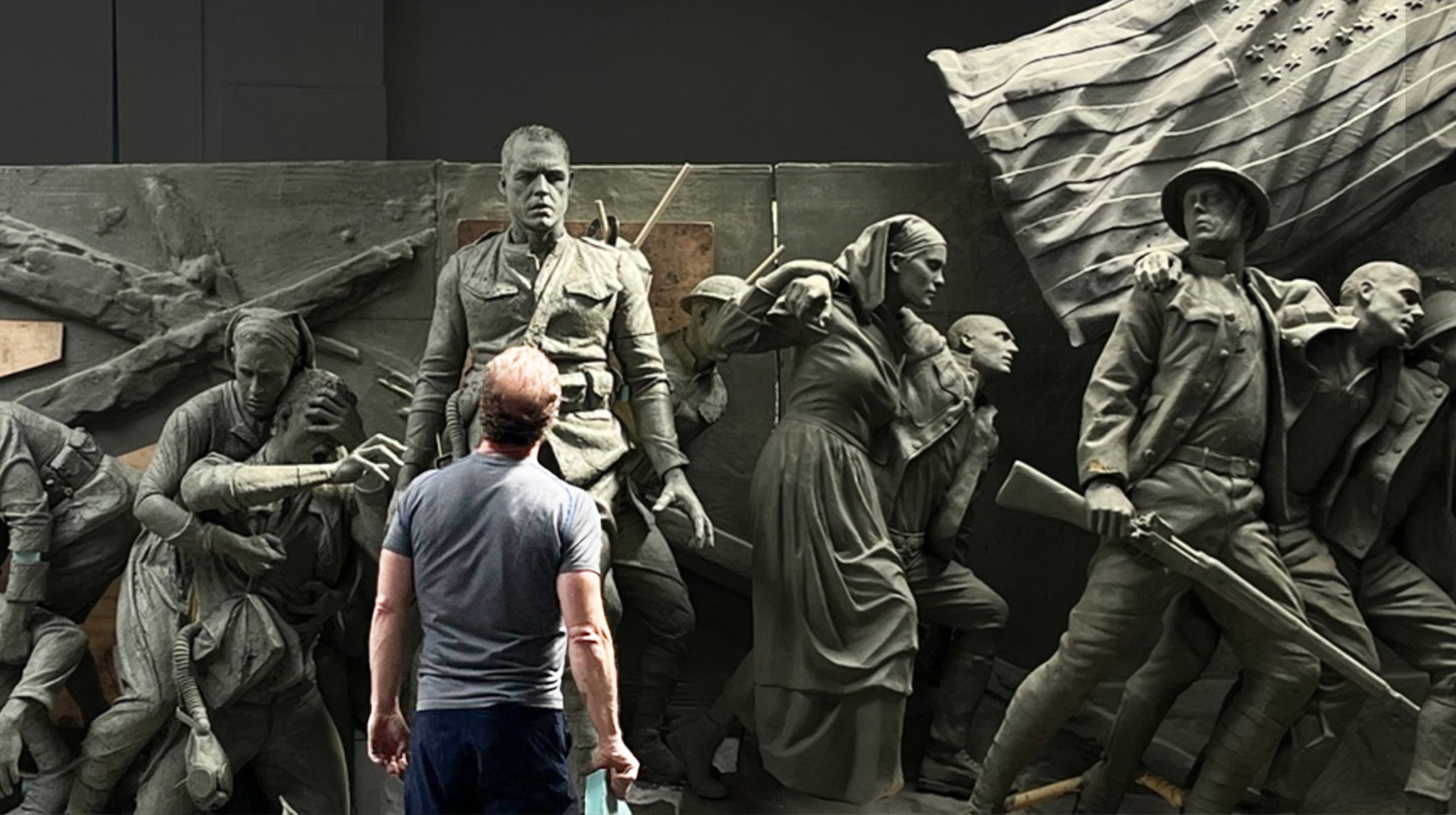
Almost ten years in the making, a massive bronze relief sculpture that will serve as the National World War I Memorial is on its way to the U.S. this week. The memorial features 38 larger-than-life figures, each of which tell part of the story of an American soldier leaving for war and, later, returning. To correctly capture facial expressions of horror, determination, and experience on the bronze figures, the artist behind the wall used modern combat veterans as models.
The 58-foot-long, 10-foot-tall sculpture will sit in Pershing Park in Washington D.C., a public square named for the general who led U.S. forces in Europe during ‘the Great War,’ covering a full side of the park. American sculptor Sabin Howard spent almost ten years creating the memorial. Across its length, sculpted figures stand, fight, fall, kneel, crawl, climb, and gaze out in bronze, each highlighting an experience of the war.
“I came into this project not really aware of the sacredness of [World War I] and how big it was,” Howard told Task & Purpose. “I’m a different human being than when I started it. This project really brings a human, visceral quality to WW I, rather than just a didactic history book look at it.”
Working first in his New Jersey studio then an English foundry to create the final bronze castings, Howard’s team built the WW I memorial in four sections, each of which is being shipped to Baltimore this week. The elements will then be trucked to Washington and installed in Pershing Park. It’s official dedication is scheduled for September.

If the figures across the relief are eerily lifelike, it’s because Howard used live models for each figure. He began with college students posing but brought in military veterans with extensive experience at war to capture their experiences in facial expressions and body language.
“You have to get veterans because the faces have to look like they carried that history of combat and what they went through,” Howard said. “It’s a pretty telling story of the horrors of war revealed in the facial expressions, and it’s on that wall to be there forever because bronze beats mortality.”
He honed his craft from a young age, starting out by drawing and later sharpening it as a master sculptor in Italy, where he spent many of his formative years. His experience creating the massive memorial has fundamentally changed him as an artist.
“I was more esoteric as a strict classicist,” Howard said. “Now, I’m more of — I guess you could call me an expressive humanist. I’ve kind of morphed into a whole different way of sculpting and looking at art.”
Subscribe to Task & Purpose today. Get the latest military news and culture in your inbox daily.
Howard started the WW I memorial by creating a scaled-down version first. Then, he made the full-sized clay sculptures and shipped them to the Pangolin Editions sculpture foundry in England in sections, where they were cast into bronze replicas.

He finished the last clay sculpture in January, and then he and his team traveled to England, where they put the finishing touches on the bronze memorial, completing the project in late June.
“It feels like I just did a freaking giant four-and-a-half-year deployment, and now it’s over. That’s what it feels like,” Howard said. “I was going 100 miles an hour, and then suddenly, it’s like, you stop, and you got all that momentum and energy in your body. It’s like, WTF, what do I do now? That’s what it feels like, and now I gotta go do another big project as big as that one.”
